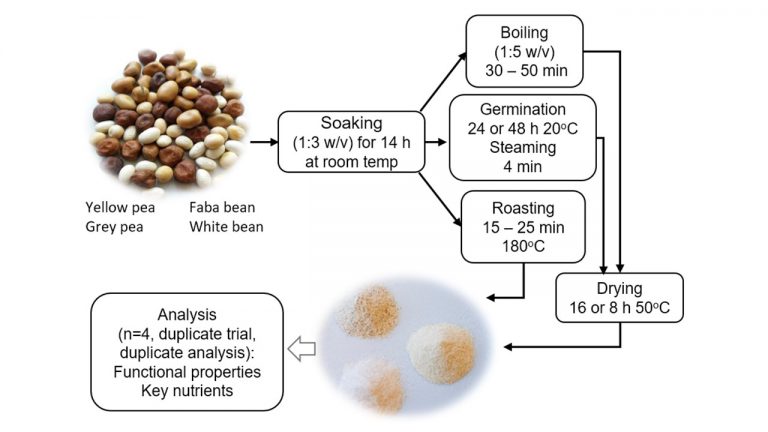
In a study published in Food Science and Nutrition by the New Legume Foods team at Linnéuniversitetet, the effect of different treatments (boiling, roasting, and germination) when preparing flour from gray pea, yellow pea, white bean, and faba bean were investigated. Functional properties such as water and oil absorption capacity, emulsion and foaming properties, and gelation concentration of the flours produced following different treatments were determined. Functional properties of legume flour determine the performance of legume flour as a food ingredient, thereby affecting the characteristics of the end-product and consumer acceptance. The nutrients content, such as total dietary fiber, total choline, and folate in the prepared legume flours, were also investigated.
The results from our investigation show that various treatments affected the functional properties and nutrient content of legume flours differently. All prepared flours from yellow pea, gray pea, white bean and faba bean had high water absorption capacity but low in oil absorption capacity. Therefore, they could potentially be used in products such as sausages, custards, and batter for fried products. Moreover, all treated flours from gray pea had low emulsion and foaming properties. So they are not ideal to be used in the production of cakes, mayonnaise, and meat products. Furthermore, all treated flours from all legume types are unsuitable for use as a sole thickening or gelling agent. Irrespective of legume-type, boiling reduced the folate content markedly compared with roasting or germination. Thus roasted and germinated pulse flours could be used for bio-fortification to enhance total dietary fiber, resistant starch, total choline, and folate content. In conclusion, Swedish legumes have a promising potential to be used as alternative ingredients in various types of food.
Read the full study here: https://onlinelibrary.wiley.com/doi/full/10.1002/fsn3.1280
